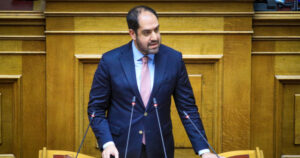Citizens are being significantly burdened in terms of their participation by the drug price increases finalized by the National Organization for Medicines in a list the day before yesterday. Several of the formulations for which the retail price is going up are particularly cheap. However, there are increases of up to 400%, which will be directly reflected in the “pocket” of the insured.
According to estimates, the total burden on expenditure from the new prices is estimated to be around €90 million, with €60 million relating to the amount that will be borne by EOPYY’s expenditure and is expected to be covered by pharmaceutical companies through clawback. The remaining approximately €30 million relates to the participation of insured persons.
The remaining €30 million will be paid by the insured persons.
It is recalled that the day before yesterday the EOF posted on its website the prices for 1,242 formulation codes for which the companies distributing them had applied for their adjustment (among them are 6 formulations that received a price for the first time).
According to the data in the relevant list, increases of more than 1% are obtained for 843 formulations. In fact, for about 700 codes the increase is more than 10%, while 570 increase by 20% or more. In about 100 drugs the price more than doubled. Specifically, in 100 drugs the increase moved 100% reaching 448% for one formulation!
The first list of proposed increased prices included 461 formulations. However, in the end the drugs for which prices are being increased are many more. 580 of them are at the request of companies and the rest are “affected”, meaning they were co-opted by other drugs in the same category.
Examples
The biggest increase is shown by a formulation based on tyrothrisin (a dermatological antibiotic) which has risen from 0.96 euros to 5.26 euros. This is an increase of 448%.
An anti-inflammatory drug with the active substance prednisolone increased from 1.01 euros to 4.63 euros, while another preparation for the nervous system with the active substance haloperidol increased from 2.7 euros to 12.35 euros. Another example is a tranexamic acid-based medicine which increased from €5.29 to €23.88.
The EOF’s list also includes a number of expensive preparations that have become even more expensive. An example is an antimicrobial drug whose retail price increased from 317.22 euros to 764 euros. Also, immunoglobulin which from 1083.92 euros today, increased to 1435.68 euros.
The criteria that the drugs had to meet for the price increase are:
– How far from the price they should be (based on the average of the two lowest in the Eurozone).
– How unique they are in terms of their active substance and pharmacopoeial form.
– How much is their market share.
– Whether or not there is permanent coverage through the IFA.
Ask me anything
Explore related questions





